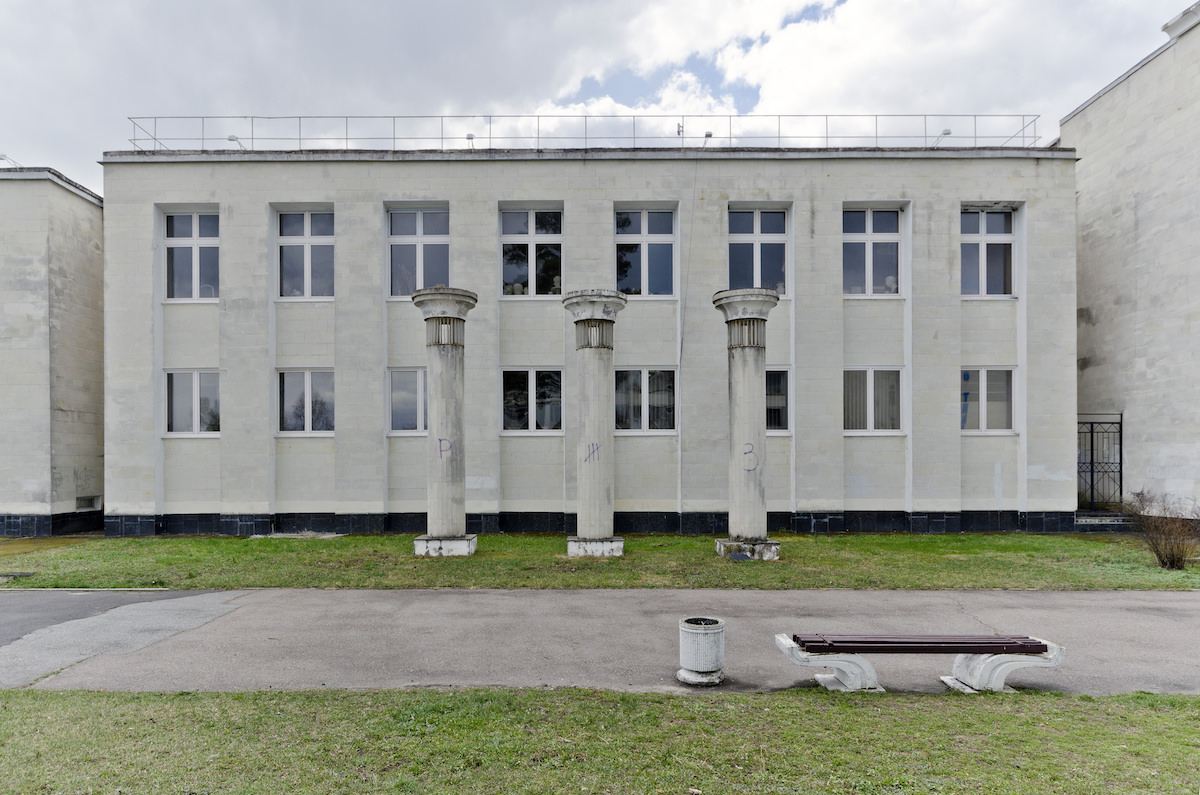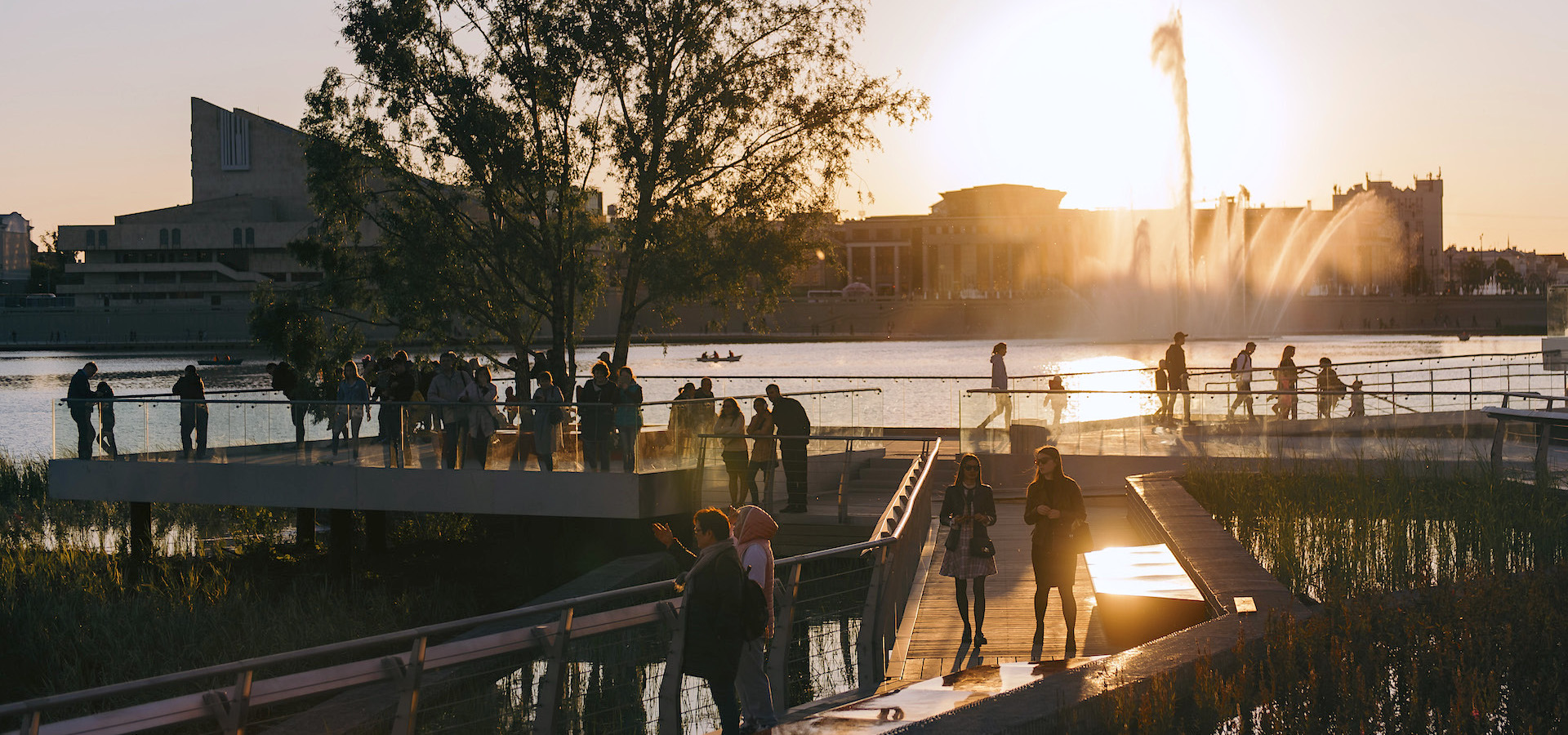Extinction Rebellion is taking root in Eastern Europe. Here’s what they’re fighting for
Eight activists tell us about the most burning environmental issues in their countries, and their struggles challenging the general public’s perception that concern about climate change is a “Western luxury”.
After originating in London almost a year ago, environmental protest movement Extinction Rebellion (XR) has swept through cities across the world. Together with Fridays for Future, the student strike movement founded by 16-year-old Swedish activist Greta Thunberg, XR is working to put climate change at the centre of the public agenda.
Despite sharing the same ecocentric values and creative protest tactics as the London movement, the smaller XR and Fridays for Future groups in Eastern Europe face an arguably more challenging test than their western counterparts. In countries where local people and politicians have long seen climate action as a western luxury — a task that comes far below economic and political security on the national to-do list — even bringing environmental issues into public discourse is tough. Yet environmental issues are deeply intertwined with the most pressing socio-political and economic problems of the region, including widespread government corruption, poor health and safety standards, and the difficult legacy of socialist industrialism.
The Calvert Journal asked activists from eight Eastern European nations to talk about the greatest ecological challenges their countries face — and how their efforts to bring climate change to the people have been met by authorities.
Poland
Poland’s smog levels are some of the highest in Europe – 36 of the 50 cities in Europe with the worst air quality are in Poland, according to Radio Poland. The newly-reelected Law and Order party, however, remains committed to coal, and is currently campaigning in Brussels to lower the European Union’s environmental standards. Nationwide environmental issues, such as poor waste management and lack of bicycle infrastructure, saw Poland’s capital, Warsaw, fall in at 74 in the environmental section of the 2018 Arcadis Sustainable Cities Index.
Tash, 24
“Coal mines are probably one of the biggest problems in Poland. There’s a new draft law being pushed through parliament that would give Warsaw the power to circumvent local governments and communities if it decides that a mining project is important for ‘the raw material security of the country’. The mines we already have are devastating for the environment — lakes are literally disappearing. Yet the government wants to reserve the right to open new mines, disregarding local protest and opposition. They clearly have no intention of meeting any CO2 emissions quotas. It’s outrageous.
The authorities have not responded to any climate protests. Even during the election campaign, the issue was barely mentioned in debates. When 13-year-old Inga Zasowska kicked off student protests in front of the Polish Parliament building in July this year, she made the news briefly, but government officials just laughed at her, or said that they needed to act slowly, cautiously. Some opposition politicians expressed support for the Młodzieżowy Strajk Klimatyczny (Climate School Strike) but so far we have had no official answer from the government.”
Extinction Rebellion protest in Warsaw. Image: Grzegorz Welnicki
Czech Republic
With a growing alternative energy sector, the Czech Republic is slightly ahead of its neighbours on environmental issues, ranking 33rd in the Environmental Performance Index for 2018. But the Czech Republic’s economic development also comes at an environmental cost, with infrastructure projects often involving the felling of forests, jeopardising biodiversity as well as animal habitats and drinking water supplies.
Martin, 32
“One effect of global warming on the Czech Republic — and Europe in general — are the distorted jet streams pulling hot air from northern Africa into Europe and wreaking havoc on local fauna and flora. We also have unprecedented droughts, and a third of our forests are basically dead, which creates a huge challenge to our ecosystems. The droughts put a lot of stress on local agriculture, which aggravates the damage already done to the soil by unsustainable farming practices. It also depletes water sources in many areas in the countryside.
So far, the response of the authorities has been mild at best, showing that the current political establishment is neither prepared, nor willing, to solve the crisis. Most likely, it does not understand the scale and urgency of the challenge ahead of us. Local media is split over environmental issues. Although some take the crisis seriously, others have to stay quiet because their owners are local oligarchs investing in fossil fuels.”
Slovakia
Air pollution in Slovakia is largely a hangover from the former Czechoslovakia, which registered the highest levels of sulfur dioxide emissions in Europe. Now, coal mines and metallurgical plants keep contaminating the air which Slovaks breathe. It also causes acid rain, which is worsened by emissions from neighbouring Poland and Germany, and means that Slovakia’s forests are shrinking rapidly.
Romana, 26
“Coal mining and the burning of fossil fuels is a big problem, most notably in Slovakia’s Nitra region. Scientists have found alarming levels of arsenic in the wastewater there. The Slovak government has since promised to stop mining and burning coal by 2027, so we are a bit more optimistic now.
Both coal and private households — particularly those who burn solid fuels, like wood or even clothes for heating — are responsible for the smog in Slovakia. Even though we have several beautiful national parks, like the National Parks of High and Low Tatras, people are still able to cut trees there to heat their homes, which disturbs the area’s ecological stability and puts many species in danger of extinction.
We’re only using renewable sources to produce 8.7 per cent of the heat we need, whereas the European average is around 20 per cent. Slovakia needs to reinforce a more sustainable, centralised heating system.
In general, we still struggle in the areas of recycling and eco-awareness. People are still not used to taking their own bags to supermarkets. There is a small zero-waste movement, but the majority of people don’t care that much. Consumerism overrules everything else in Slovakia.
I think there are still too few of us in XR Slovakia. There has basically been no government reaction to our protests. So far, they’re ignoring us.”
Protest in Bratislava
Hungary
Hungary’s most pressing environmental issues are poor air quality and deforestation, according to the 2018 Environmental Performance Index, where the country ranks 43rd. In the same year, Hungary registered the highest rate of lung cancer — an illness which can be aggravated by air pollution — in the world, according to World Cancer Research Fund. Air pollution in Hungary is largely the result of car emissions and electric power plants, as well as homes which rely on burning poor-quality wood, coal or general waste for warmth.
Anna, 29
“I think the biggest environmental problem in Hungary is inadequate or almost non-existent environmental policy. One of the major problems everyone deals with on a day-to-day basis is poor air quality. Air pollution is present not only in big cities, but also in small towns and villages, and is caused by both industrial and residential emissions.
We haven’t taken part in any forms of civil disobedience yet as our group is still relatively new and the legal and societal circumstances are markedly different from countries like the UK, for example. Unfortunately, our voice is not yet strong enough to make a lasting impact. But more and more people are aware that Extinction Rebellion is present in Hungary, and I’m hopeful that we are getting closer to the stage where we can pressure our leaders to act.
The centralised state media has no intention of spreading the message that urgent action is needed to avoid climate catastrophe. The international movement is a bit better known, but it is often criticised or outright ridiculed in the state-owned media here. We try not to pay a lot of attention to it because spending valuable energy on this kind of journalism would only hold us back.”
Protest in Budapest. Image: Courtesy of XR Hungary
Bulgaria
Since Bulgaria’s accession to the EU in 2007, its tourism industry has boomed. Now, the rich and powerful have their eye on developing the country’s stunning seaside and mountains, which some worry will put private profits above what’s best for the natural landscapes. Still, the Balkan country is doing slightly better than its neighbours, ranking 30th in the 2018 Environmental Performance Index.
Margarita, 25
“Corruption here is endemic and I think the tourism industry is at the heart of it. The Ministry of the Environment and Waters is about to approve another large ski resort in one of the country’s largest national parks — Pirin, which is protected by UNESCO — despite the fact that private construction is forbidden in national parks. The situation is similar on the coast. We only have one wild beach left — Karadere — and we’ve had many protests trying to save it, and to push against constructions on the seashore.
So far, the government has ignored our environmental protests. Our Minister of Ecology said on TV about a year ago that climate change is a conspiracy worth billions of dollars. The Minister of Energy said that Bulgaria plans to rely on coal as a main source for the next 60 years. This crisis really is beyond the scope of our ruling class and beyond comprehension for most people.”
Romania
Romania is one of the few countries in Eastern Europe where ecological issues have generated mass protests. On 3 November 2019, more than 4,000 people marched against widespread illegal logging, which had resulted in the murder of two foresters. It followed similar demonstrations in 2013, when tens of thousands took to the streets to convince parliament to retract a law that would have allowed the building of the Roșia Montană gold mine in the country’s oldest settlement. Similar conflicts, however, where corporate investments endanger local communities, continue to persist.
Cristian, 28
“When I say ‘ecological disaster’, the first word that comes to mind is ‘cyanide’. The Roșia Montană [gold mine] case showed us that we faced a real apocalyptic scenario. There’s one photograph of a lake turned orange by cyanide that will stay with me forever. These corporations’ crusade for gold is hiding an ecocide with catastrophic consequences for the air, water, forests, fields, agriculture and human health, ultimately forcing locals to leave the area. The Roșia Montană protests in 2013 were the moment when an entire country realised that cyanide exploitation means death. The battle is not over — a similar mining project, the Certej gold mine, re-appeared this year — but, happily, resistance from civil society and NGOs brought the case to the attention of the General Anti-Corruption Directorate. Ultimately, the court ruled against their gold mining.
The authorities have had a mixed reaction to the latest environmental protests. The Bucharest mayor was the only official in the world to change the track of the Fridays for Future march. But the police were respectful.”
Moldova
Moldova’s rich soil made it one of the main suppliers of fruit, vegetables, and wine to the Soviet Union. But the large-scale Soviet farming, as well as poor agricultural practices over the last three decades, resulted in the abuse of pesticides. Other environmental issues, such as pollution, water quality, or waste management, receive no media attention. All of these issues led to the country’s very poor 112th position in the Environmental Performance Index.
Ecaterina, 29
“Moldova has more than 3,000 landfills, of which more than 2,000 are illegal. In addition to that, with the exception of the capital and a few other cities, Moldova lacks a basic network of sewers. The combination of these issues has contributed to Moldova’s highly polluted groundwater. The latest data shows that 80 per cent of the country’s groundwater is already too dangerous for human consumption.
In the beginning, XR Moldova organised a ‘die-in’ — we lay on the pavement just outside the Ministry of Agriculture, Regional Development and Environment, to draw attention to the imminent extinction. The department minister, who had taken office just a few weeks earlier, discussed our demands and said that officials were open to declaring a nationwide environmental crisis. We were told that we would be invited for a separate meeting to discuss it. Then the government collapsed in a vote of no-confidence.
Now, I’ve taken office in the Moldovan Parliament as the counselor of MP Dumitru Alaiba, an MP who showed support for Extinction Rebellion Moldova. I am currently working on a motion that would declare a state of environmental crisis in Moldova. Besides that, we have managed to pass the first reading of a bill which fines single-use plastics.
Kyiv protest. Image: Courtesy of XR Ukraine
Ukraine
Ukraine faces a long list of environmental challenges, including air pollution, water quality, soil degradation, solid waste management, biodiversity loss, and a plethora of resulting human health issues. On the brighter side, 74 per cent of Kyiv locals go to work by public transport — the highest figure in Europe.
Grigoriy, 37
“Since its independence in 1991, Ukraine has maintained a Soviet attitude towards environmental problems — it ignores them. Partly, that’s because Ukraine is run by oligarchs, who rule politics, the biggest (and most-polluting) businesses, and Ukraine’s big media organisations.
The country’s large manufacturing industries haven’t been modernised over the last 30 years, and corruption creates conditions under which it’s possible not to comply with environmental standards. Inadequate water treatment, as well as the illegal dumping by factories, results in a lot of pollution for the country’s surface water — the main source of drinking water for 80 per cent of Ukrainians. The main source of drinking water, the Dnipro river, is also being destroyed by a cascade of hydroelectric power plants and waste from businesses and factories close to the riverside. The scale is disastrous.
The first eco-strike by Extinction Rebellion in Ukraine (called RebellionUA), which took place in collaboration with PlastikWood Animations and Fridays for Future Ukraine, was held on 1 November. Protesters marched on central Kyiv with a dinosaur made from plastic waste. We wanted to attract our fellow citizens’ attention to the terrifying ecological problems facing Ukraine and the world. We got almost no reaction from the media or the government.”


